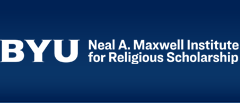Mormon Studies Review
Keywords
Reconstruction, Mormons, nineteenth century, antipolygamy, omission
Abstract
“Reconstruction seems to be getting bigger and bigger all the time,” observes Rachel St. John in her contribution to Reconstruction and Mormon America, a new collection of essays edited by Clyde A. Milner II and Brian Q. Cannon. Indeed, over the past two decades historians have steadily expanded the parameters of “Reconstruction,” both spatially and temporally. Traditionally used to describe the US government’s physical and political reconstruction of the former Confederacy during the years 1865 to 1877, scholars have now created a hemispheric vision of Reconstruction that stretches back in time to the US-Mexico War and forward in time to the Chinese Exclusion Act of 1882, the Dawes Act of 1887, and the Spanish-American War. Elliott West’s lecture “Reconstructing Race,” which started all this Reconstruction-creep in 2002, did not mention the Church of Jesus Christ of Latter-day Saints nor Utah; Heather Cox Richardson’s essential West from Appomattox (2007) included a single sentence about Mormons in the context of woman suffrage.1 These scholars’ omission of Mormons is surprising, however, given that Sarah Barringer Gordon’s The Mormon Question (2002) had explicitly called the US government’s antipolygamy efforts in the 1880s a “second reconstruction in the West.”2 The nine essays in Reconstruction and Mormon America address this omission by exploring to what extent Mormons were “reconstructed” during the nineteenth century. The essayists disagree with each other to a substantial degree, making the collection a lively—if somewhat unfocused—read.
BYU ScholarsArchive Citation
Paddison, Joshua
(2021)
"Review: Clyde A. Milner II and Brian Q. Cannon, eds. Reconstruction and Mormon America. Norman: University of Oklahoma Press, 2019.,"
Mormon Studies Review: Vol. 8:
No.
1, Article 24.
Available at:
https://scholarsarchive.byu.edu/msr2/vol8/iss1/24


